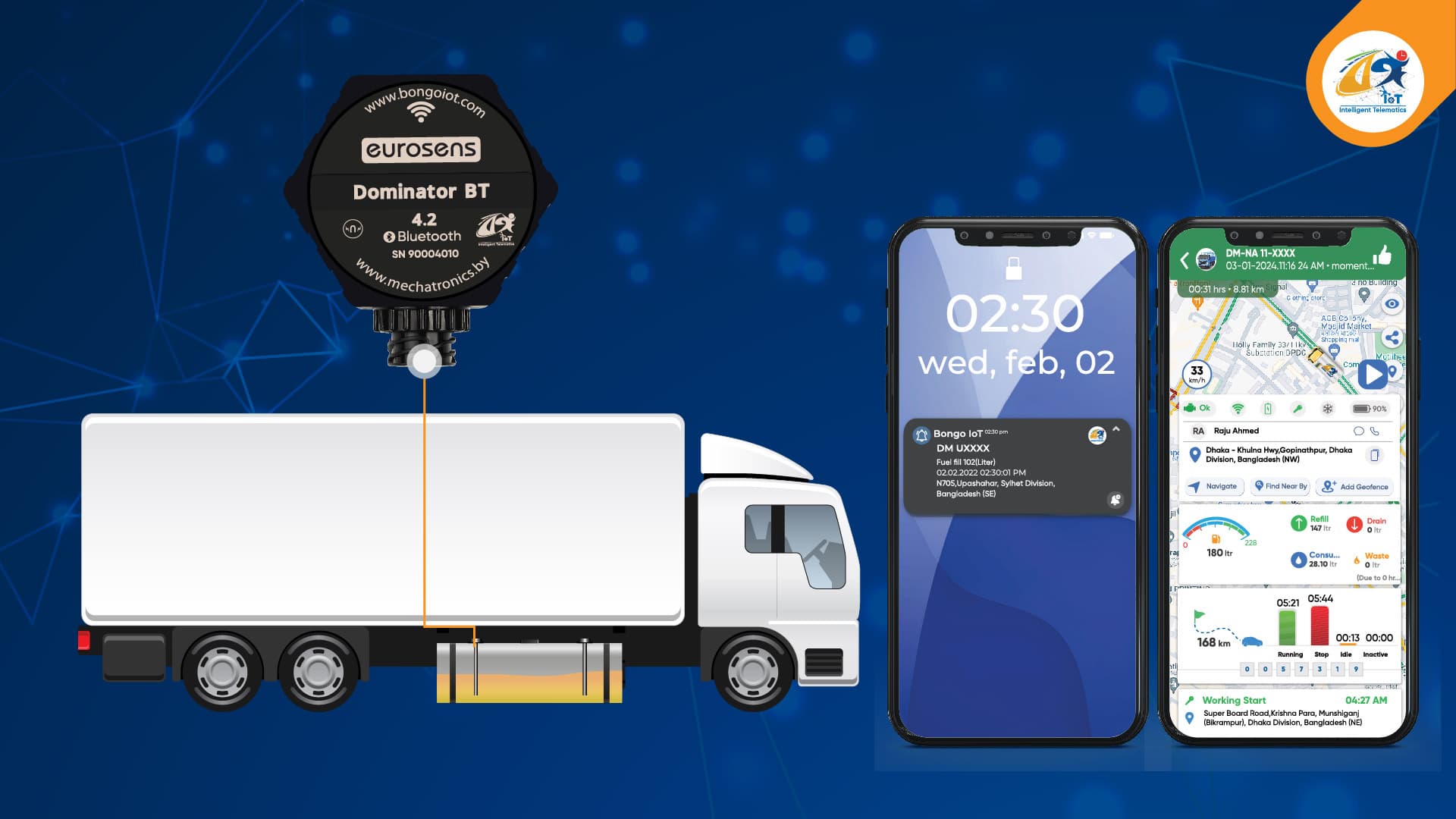Introduction:
Precision and efficiency are crucial in fleet management, particularly when it comes to monitoring fuel levels in large-volume tanks. To achieve this, astute fleet managers strategically install multiple fuel level sensors. In this comprehensive blog post, we will explore the intricacies of fuel level sensor functionality, discover the components that make up these sensors, discuss the criteria for selecting the right fuel sensor, and understand why installing more than one sensor is essential for the optimal functioning of large volume fleet tanks.
How Does a Fuel Tank Level Sensor Work?
Fuel level sensors operate on a well-defined principle:
- Preparation: The fuel tank undergoes a thorough cleaning, and the sensor's installation point is determined based on the tank's shape and size.
- Cutting and Calibration: The sensor is cut to match the depth and size of the fuel tank, followed by calibration to detect empty and full values.
- Installation: The calibrated fuel sensor is installed in the tank, and connected to a laptop for configuration using the OEM adapter.
- Testing: The vehicle is taken to a refueling station, and sensor readings are recorded at empty and regular intervals until the tank reaches full capacity.
Components of a Fuel Level Sensor:
Fuel level sensors comprise several components, both internal and external, to ensure precise readings:
- Measurement Rod: Dipped into the tank and calibrated for different fuel levels.
- Telematics Unit: Correlates fuel levels with the vehicle's location.
- Bluetooth Module: Wirelessly transmits fuel levels from the tank to the Telematics Unit.
- GSM Modem: Transmits fuel level data to the fleet manager via the Internet.
- SIM Card: Provides internet connectivity for the sensor.
- Signal Cable: Ensures constant connection between the Fuel Sensor and the Telematics Unit, resistant to breaks and weather conditions.
- Calibration Tool: Used for post-installation calibration in the vehicle.
Choosing the Right Fuel Sensor:
To select between capacitive and ultrasonic fuel sensors, consider:
- Tank Dimensions: Height and shape influence capacitive sensors, and knowing these dimensions is crucial.
- Outputs: Understand the outputs needed to connect with the tracker. Consideration of tank dimensions is vital, ensuring the measuring part of the sensor is slightly larger than the tank height. Leaving a gap prevents short circuits due to potential dirt or water accumulation. For vehicles with complex fuel tank shapes, extra-long tanks, or multiple fuel tanks, multiple sensors may be necessary for precise measurements.
Why Multiple Fuel Level Sensors?
- Diverse Tank Geometries: Large fleet tanks vary in shape and size, making a single sensor inadequate for accurate readings. Multiple sensors ensure comprehensive and precise measurements, providing fleet managers with an accurate understanding of fuel levels across the entire tank.
- Redundancy for Reliability: Reliability is paramount, and a single sensor failure could lead to inaccurate readings. Installing multiple sensors establishes a redundancy system, ensuring continuous monitoring even if one sensor malfunctions.
- Enhanced Accuracy and Precision: Accurate fuel level data is critical for efficient fleet operations. Multiple sensors cross-verify measurements, reducing the margin of error. This precision optimizes fuel consumption, preventing unnecessary refueling, and ultimately saving costs for the fleet.
- Real-time Monitoring and Alerts: Real-time data is essential for informed decision-making. Multiple sensors enable continuous monitoring, providing instant alerts for anomalies such as sudden drops in fuel levels or potential leaks. This proactive approach facilitates quick response and issue mitigation.
- Adaptability to Fuel Types: Fleets use diverse fuels, each with unique properties. Different sensors designed for specific fuel types ensure precise measurements, regardless of the fuel in use.
- Improved Maintenance Planning: Regular maintenance is crucial for sensor longevity. Multiple sensors allow fleet managers to track individual unit performance, enabling proactive maintenance planning, reducing downtime, and minimizing the risk of unexpected failures.
Conclusion:
In the dynamic world of fleet management, the installation of multiple fuel level sensors is not a luxury but a strategic necessity. The advantages of enhanced accuracy, reliability, and adaptability to diverse tank configurations make this approach indispensable for large-volume fleet tanks. By embracing this technology, fleet managers can optimize operations, reduce costs, and navigate toward a more efficient and sustainable future. The meticulous deployment of multiple fuel level sensors isn't just a measure of preparedness; it's a key to unlocking the full potential of fleet efficiency and accuracy.
🌐Discover more
Visit at Fleet-Management
WhatsApp (+88) 01322813551
or,
Mail Us: sales@bongoiot.com

